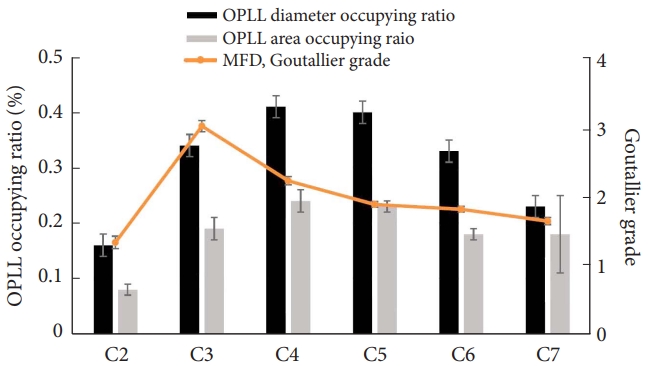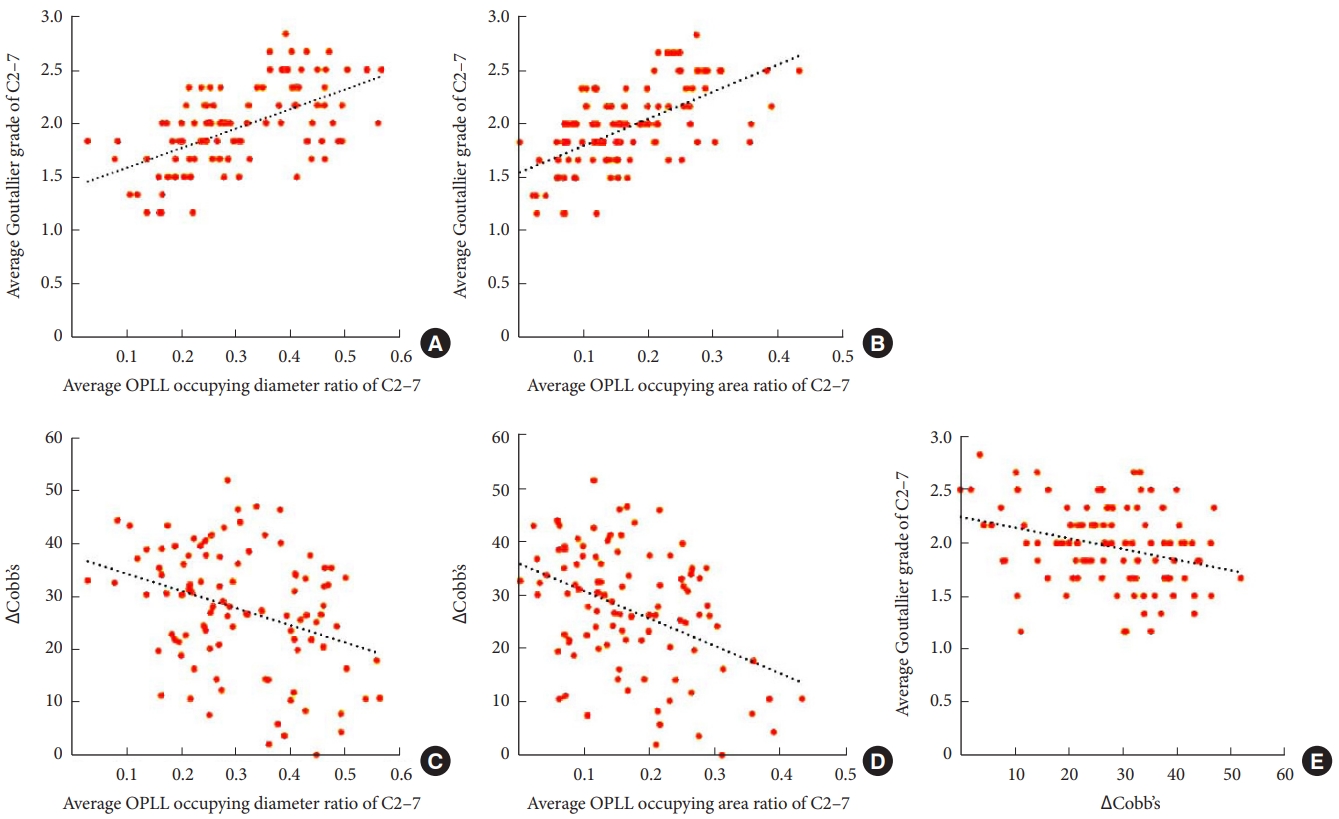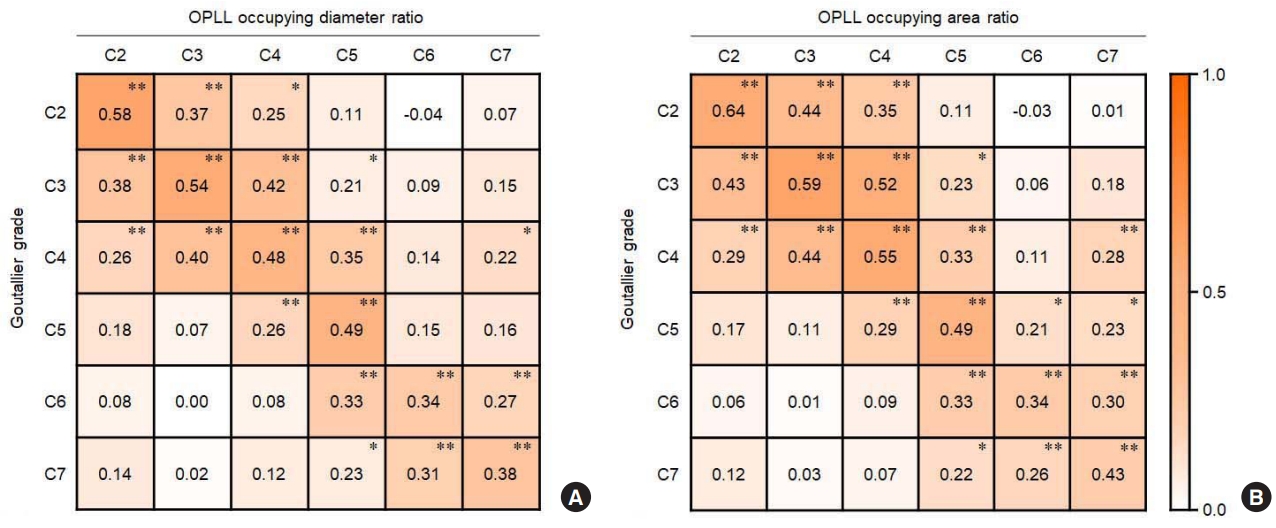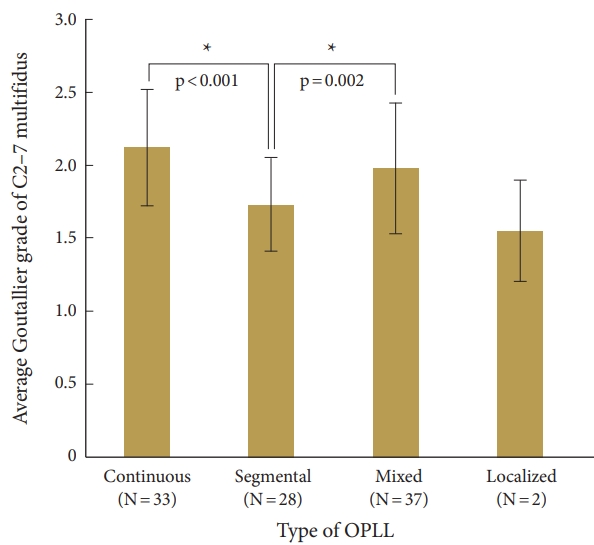1. Matsunaga S, Sakou T. Ossification of the posterior longitudinal ligament of the cervical spine: etiology and natural history. Spine (Phila Pa 1976) 2012;37:E309-14.

3. Kim KH, Kuh SU, Park JY, et al. Association between BMP-2 and COL6A1 gene polymorphisms with susceptibility to ossification of the posterior longitudinal ligament of the cervical spine in Korean patients and family members. Genet Mol Res 2014;13:2240-7.


5. Sato R, Uchida K, Kobayashi S, et al. Ossification of the posterior longitudinal ligament of the cervical spine: histopathological findings around the calcification and ossification front. J Neurosurg Spine 2007;7:174-83.


6. Epstein N. Diagnosis and surgical management of cervical ossification of the posterior longitudinal ligament. Spine J 2002;2:436-49.


8. Kiss C, Szilágyi M, Paksy A, et al. Risk factors for diffuse idiopathic skeletal hyperostosis: a case-control study. Rheumatology (Oxford) 2002;41:27-30.


9. Wilke HJ, Wolf S, Claes LE, et al. Stability increase of the lumbar spine with different muscle groups. A biomechanical in vitro study. Spine (Phila Pa 1976) 1995;20:192-8.

11. Jiang J, Wang H, Wang L, et al. Multifidus Degeneration, a new risk factor for lumbar spinal stenosis: a case-control study. World Neurosurg 2017;99:226-31.


14. Fujiyoshi T, Yamazaki M, Kawabe J, et al. A new concept for making decisions regarding the surgical approach for cervical ossification of the posterior longitudinal ligament: the K-line. Spine (Phila Pa 1976) 2008;33:E990-3.

15. Tsuyama N. Ossification of the posterior longitudinal ligament of the spine. Clin Orthop Relat Res 1984;(184):71-84.

21. Kosaka T, Imakiire A, Mizuno F, et al. Activation of nuclear factor kappaB at the onset of ossification of the spinal ligaments. J Orthop Sci 2000;5:572-8.

23. Tsukahara S, Ikeda R, Goto S, et al. Tumour necrosis factor alpha-stimulated gene-6 inhibits osteoblastic differentiation of human mesenchymal stem cells induced by osteogenic differentiation medium and BMP-2. Biochem J 2006;398:595-603.


24. Yayama T, Mori K, Saito H, et al. Cytokine profile from the ligamentum flavum in patients with ossification of the posterior longitudinal ligament in the cervical spine. Spine (Phila Pa 1976) 2022;47:277-85.


25. Thoma A, Lightfoot AP. NF-kB and inflammatory cytokine signalling: role in skeletal muscle atrophy. Adv Exp Med Biol 2018;1088:267-79.


30. Cai HX, Yayama T, Uchida K, et al. Cyclic tensile strain facilitates the ossification of ligamentum flavum through β-catenin signaling pathway: in vitro analysis. Spine (Phila Pa 1976) 2012;37:E639-46.

35. Zhang L, Yang L, Li W, et al. Expression profile of long noncoding RNAs in cervical spondylotic myelopathy of rats by microarray and bioinformatics analysis. Genomics 2019;111:1192-200.


36. Cai B, Li Z, Ma M, et al. Long noncoding RNA SMUL suppresses SMURF2 production-mediated muscle atrophy via nonsense-mediated mRNA decay. Mol Ther Nucleic Acids 2021;23:512-26.


41. Sharma L, Dunlop DD, Cahue S, et al. Quadriceps strength and osteoarthritis progression in malaligned and lax knees. Ann Intern Med 2003;138:613-9.


42. Verbunt JA, Seelen HA, Vlaeyen JW, et al. Disuse and deconditioning in chronic low back pain: concepts and hypotheses on contributing mechanisms. Eur J Pain 2003;7:9-21.


44. Bousema EJ, Verbunt JA, Seelen HAM, et al. Disuse and physical deconditioning in the first year after the onset of back pain. Pain 2007;130:279-86.


45. Kalichman L, Kim DH, Li L, et al. Computed tomography-evaluated features of spinal degeneration: prevalence, intercorrelation, and association with self-reported low back pain. Spine J 2010;10:200-8.


47. Kawaguchi Y, Imagama S, Iwasaki M, et al. Japanese Orthopaedic Association (JOA) clinical practice guidelines on the management of ossification of the spinal ligament, 2019. J Orthop Sci 2021;26:1-45.




































